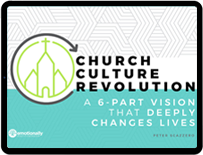10 Top Reasons Racism Continues in the Church Today
I’m excited to participate in Movement Day 2015 in New York City this coming Thursday to participate on a panel around a frank discussion on bridging barriers of race, culture, and class. In preparation, I thought I would get on paper my top 10 reasons of why racism continues in the church today. Here they are: Failure to capture Scripture’s vision of the church as a multi-racial community that transcends racial, cultural, economic and gender barriers. The gospel is the power of God that bridges the infinite gap between humanity and God as well as the “dividing wall” between races, cultures, ethnicities, social classes, and genders. Measuring success primarily by numbers. We want to grow our churches. We want it to happen quickly. The problem is that bridging racial barriers is slow and will rarely produce “big” numbers. Superficial discipleship. We focus on getting people “over the line” into salvation and connected. We don’t. Read more.





